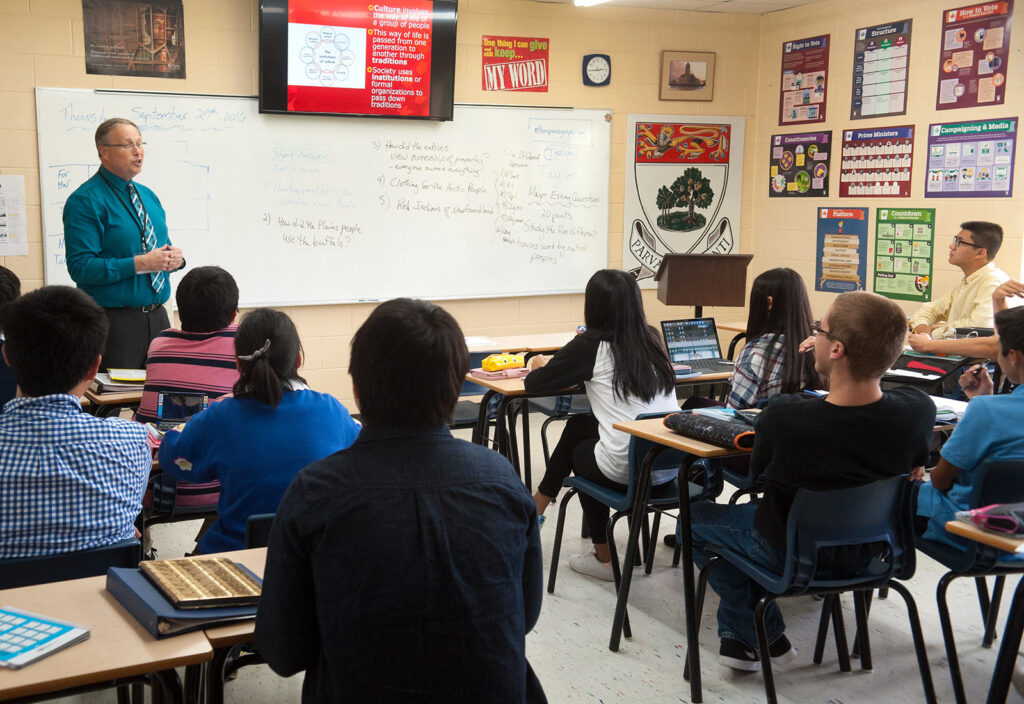School choice is no longer a fringe idea of traditional-leaning parents. Parents of all walks of life have come to learn the government can no longer be trusted to teach their children. School choice reforms are sweeping the nation, but don’t expect the government schools to bow out quietly. Many are stealthily cementing their power.
Take the example of the Forest Hills School District in Michigan, a state where public schools are well protected, with the teacher union-backed Democrats controlling all branches of the state government. School choice is the last thing on their minds. But times change, and Forest Hills is taking no chances.
This November, the district, in a low turnout off-year election, is asking voters to approve what amounts to a charge card with a $340 million line of credit. Using education tax dollars, the district is marketing the idea by mailing glossy flyers and newsletters promoting its “school bond proposal,” along with funding a shortfall in an operational millage, that the law allows it to do.
The district offers all kinds of enticements. A new aquatic center! Playgrounds! Technology infrastructure! Paving! Mechanical improvements! New roofing! Nothing seems left out.
What is not mentioned is the steady decline in school enrollment, down now 10 percent since 2013. School taxes should be going down, not up.
The Tax Lowdown
The taxes on property would start immediately and would be collected even if no bonds are issued. The school district’s current debt is $111,630,000. The current proposal would quadruple the debt. Interest payments potentially could top $40,000,000 the first year alone at today’s rates.
In 1994, Michigan voters approved Proposal A to stop government from exploiting increases in property tax valuations to fund public school spending sprees, often to the advantage of the teachers’ unions.
Children in low-valuation neighborhoods were being shortchanged by this system. So, to even the playing field, Proposal A limited property tax assessment to the rate of inflation or five percent, whichever is less. Sales tax increased two percent, which would then fund a “per pupil allowance,” which is now $9,608.
Public schools, however, have retained the right to “borrow” money via the bond market to pay for building and remodeling facilities. Public school districts took full advantage and managed to get voter approval for a laundry list of projects through school bond proposals. By 2014, according to the Mackinac Center, Michigan school districts owned a whopping $17.8 billion in long-term debt.
Money is fungible. While the public schools are prohibited from asking local taxpayers for operational funds, the “school bond proposals” give the schools more spending power, perhaps higher teacher salaries, to fend off competition from charter and private schools.
Competitors at a Disadvantage
Few private and charter schools can compete with the huge trove of funds the public schools have at their disposal. Parochial schools would have a difficult time asking for tuition that would match the per-pupil allowance. Nearly none could fund an “aquatic center,” and all maintenance and building costs would have to come from the budget or generous donors.
If public school competitors cannot offer lofty facilities, mega-sports programs, and the like, they will have a hard time attracting students at reasonable costs. Charter and private schools must also offer competitive salaries — not easy when the amply funded public schools set the bar.
Conveniently, a bond proposal is expiring this year, which allows the Forest Hills School District to advertise “no new taxes.” But taxpayers are waking up. The most recent bond proposal allowed the district to fund a $14 million new administration building that few taxpayers realized was under construction. Taxpayers would have never approved a project of this magnitude had it been pitched separately.
The bond proposal is nothing but a money grab at a time when the public school system is losing students, not gaining them.
School district bond proposals pass nearly every time and not with universal support. Tax increase requests are almost always put on off-year election ballots when voter turnout is low. Those who will benefit from the flow of millions of dollars (special interest groups, construction firms, teacher’s unions, contractors, administrators) will come out in droves to vote yes.
The bond proposal would last 21 years. No one knows what the world will be like in 21 years. Consider how radically things changed over the past decade. Taking on debt at taxpayer expense is just poor governance. Even if taxpayers are champions of public schools, that reason alone should be enough for them to say no.
Photo by Government of Prince Edward Island. Attribution-NonCommercial-NoDerivs 2.0 Generic.





